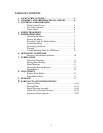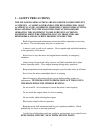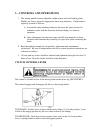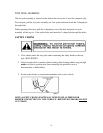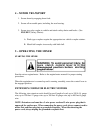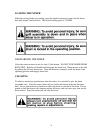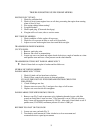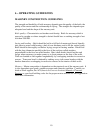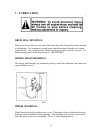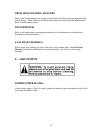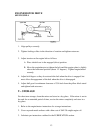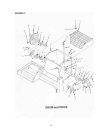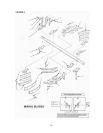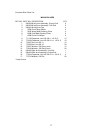
10
6 – OPERATING GUIDELINES
MASONRY CONSTRUCTION GUIDELINES
The strength and durability of brick masonry depends upon the quality of the brick, the
quality of the mortar and the workmanship in laying. The strength also depends upon
adequate bond and the shape of the masonry unit.
Brick quality – Characteristics are hardness and density. Brick for masonry which is
exposed to weather or where strength is desired should have a crushing strength of not
less than 2500 PSI.
Laying and bonding – Brick should be laid in a full bed of mortar and shoved laterally
into place to secure solid bearing, a bed of even thickness, and to fill the vertical joints.
Brick should be thoroughly wet before laying, except in freezing weather. Bricks laid
with the long dimension parallel to the face of the work are called stretches,
perpendicular to the face are called headers. Bats (chalk bricks) should not be used
except where necessary to make corners or to form patterns on the face of the walls.
Walls are bonded or tied together longitudinally by overlapping stretches in successive
courses. Transverse bond is obtained by making every sixth course headers with the
headers themselves overlapping in successive courses in the interior of thick walls.
Mortars – Mortar composition is dependent on the structural use of the masonry unit. It
is also dependent upon grade, weather exposure and climactic condition. Consult you
brick or block supplier, the ACI (American Concrete Institute) Manual of Concrete
Practices or your local building codes for the proper mortar selection for each application
form more information.



